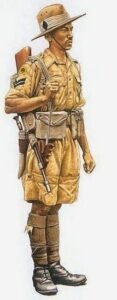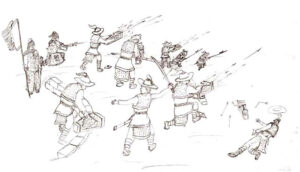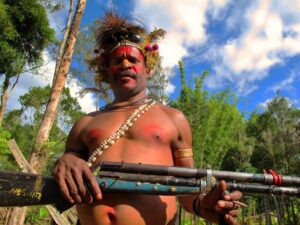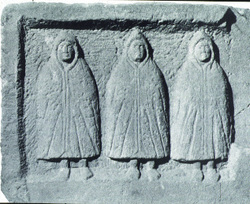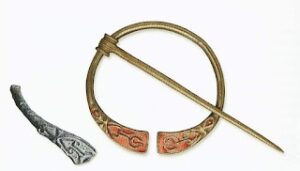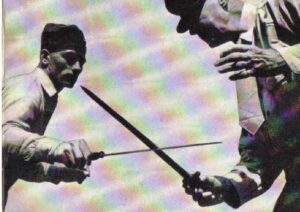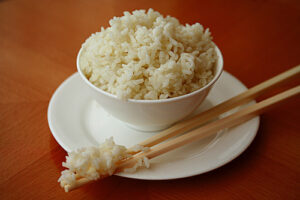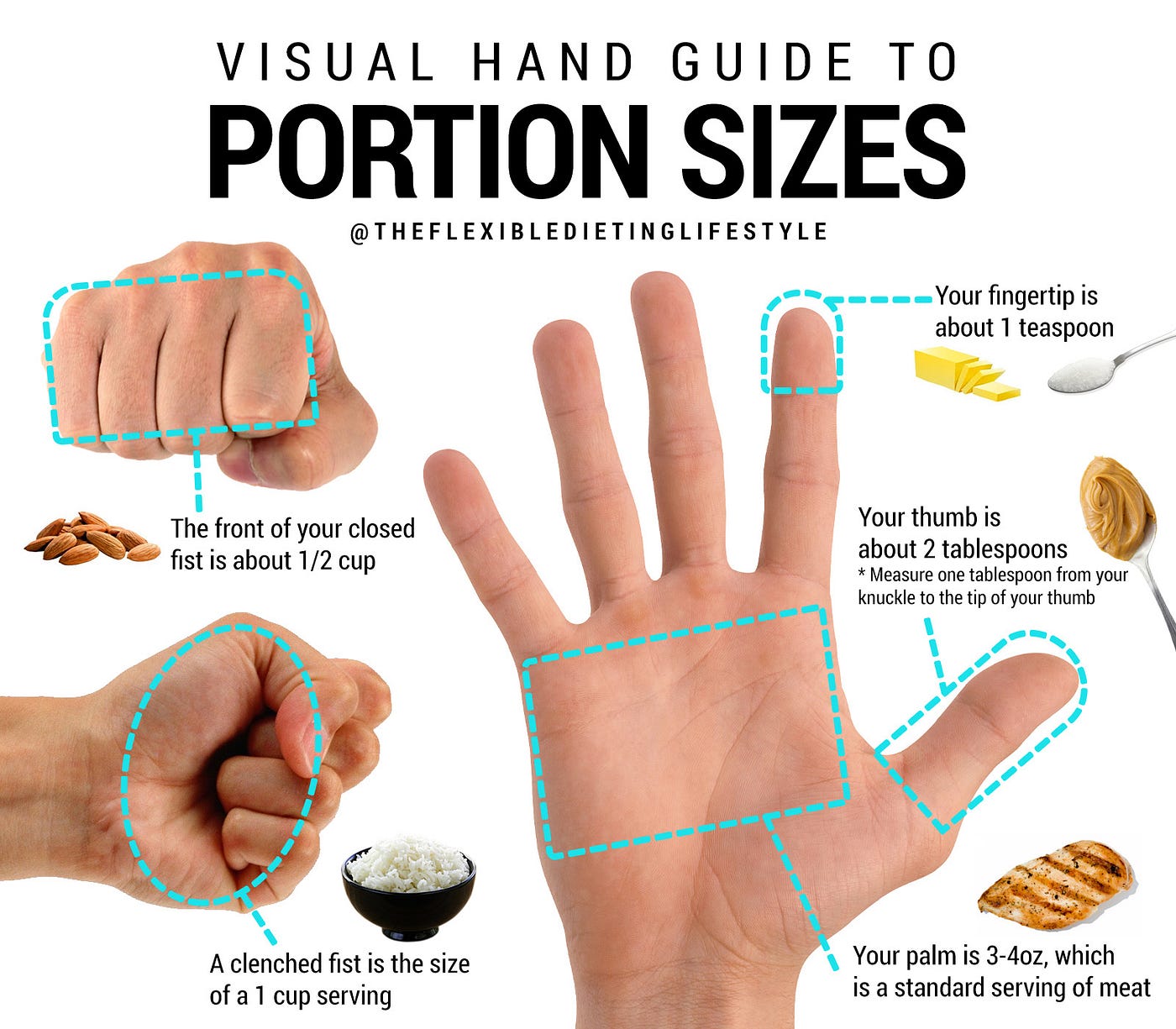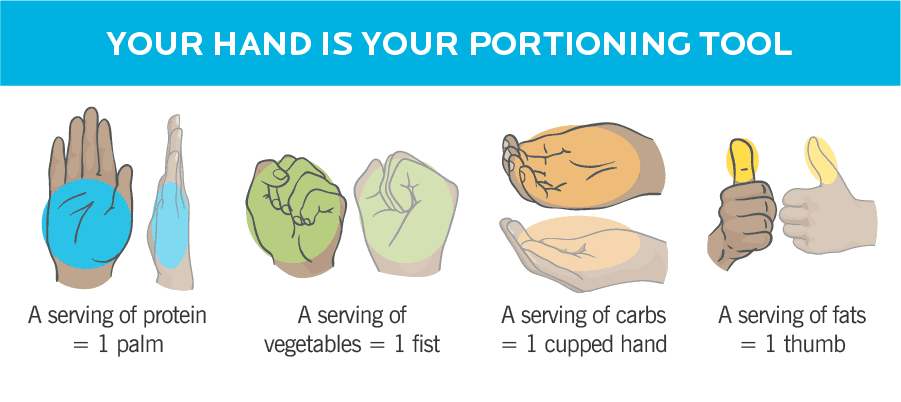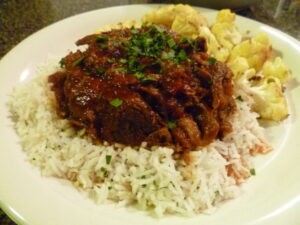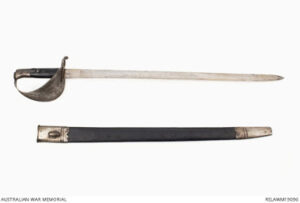Yesterday’s post on Bombay bloomers and Plus-Sixes leads me to a related topic. The blousing of trousers is a common military practice but the use of practical gaiters is somewhat neglected by both military and civilian outdoorsmen. Those of us that do use them are sometimes looked at as somewhat eccentric. Most of us don’t care, since gaiters are one of those things that once you have properly tried them you are not going back. Kephart, in “Camping and Woodcraft” sums up the merits of gaiters and related items better than I could:
“Never buy leggings that strap under the instep. The strap collects mud, and it is soon cut to pieces on the rocks. Any legging that laces over hooks will catch in brush or high grass and soon the hooks bend outward or flatten. The present U. S. A. canvas legging (Fig. 91) has only one hook, in front; it is quickly adjusted. The strap puttee (Fig. 92) is better for a woodsman or mountaineer. Leather puttees are suitable only for horsemen ; in walking and climbing they cut one in front and rear of the ankle joint. Genuine pigskin is the only leather that will stand hard service and frequent.
For still-hunting I like spiral puttees (Fig. 93), not spat but plain, as here illustrated. They are strips of woolen cloth with selvage edges, specially woven and *' formed," which wind round the leg like a surgeon's bandage and tie at the top. Do not wind too tightly. They are pliable, noiseless against brush, help to keep ticks and chiggers from crawling up one's legs, and, with the clothing underneath, are a sufficient defense against any snakes except the great diamond-back rattlers. '* In experiments, only in rare instances has snake virus stained blotting- paper placed behind two thicknesses of heavy flannel." German socks, instead of leggings, are good for still-hunting in severe cold weather. Many dispense with leggings by wearing their trousers tucked inside boots or high-topped shoes. This will do when the woods are dry, but when all the bushes are wet from rain, or from heavy dew, the water runs down inside your shoes until they slush-slush as if you had been wading a creek.”
Shortly after I first read this I was reading a James Bond novel where Bond and his companion were at risk from an area infested with water moccasin snakes. It occurred to me that Bond and his companion could have used the bedding in their luxury prison to improvise gaiters or puttees to protect themselves from the snakes.

In contrast to Kephart, I favour gaiters over puttees. Zippers were relatively rare in Kephart’s era so gaiters had to buckle, lace or be hooked closed. Mine have heavy duty zips with individual teeth up the back part of the leg. Lengths of cord tied in decorative knots have been added to the zipper pulls so they are easier to operate if fingers are wet or numb with cold. Mine were designed to use a strap under the sole but I removed this. The elasticated areas and the hook that engages the lowest section of boot lace keeps them adequately in position. Don't confuse gaiters with the short anklets issued by some armies. Gaiters or puttees should come at least halfway up the calves.
I cannot discuss gaiters without mentioning my time hiking in Iceland, where the gaiters proved themselves useful in ways unexpected.
When it came to crossing a glacial meltwater stream one of the first things I would do is remove my gaiters. One gaiter would be placed on the ground, outer-side down. I would then step out of my boots and on to the dry clean inner surface of the gaiter. Standing there I could remove my socks and trousers and stow those in the top of my pack. I wear quick drying swimming shorts as underwear so once I had put my boots back over my bare feet I was nearly ready to cross. Gaiters were stowed in the top of the pack together with my socks, trousers and a towel.

On the other side of the river I would take out a gaiter and place it outer-side down on the ground. I would remove one boot, dry my foot with my towel and step onto the clean gaiter. I would then do the same with the other foot and replace my socks and trousers while standing on the clean dry gaiter. Shake the water out of my boots, replace them and then put my gaiters back on.
As you can see, gaiters make a task like crossing a ford much more manageable. Gaiters protect your trousers from damage and dirt. They can keep sand out of your footwear. Gaiters can protect you legs from thorns, even when wearing shorts.
Modern gaiters can be found constructed from stuff such as gore-tex. Mine are just simple condura and I don’t see any need for anything like gore-tex. Condura is tough, non-absorbent, breathable and sheds water, and that is all that you need. When buying gaiters make sure they will fit your boots without need for a strap or cord across the sole. Manufactures make them with the cords because people think they need them. A decently designed gaiter does not! Zips should be of the type with individual teeth rather than the spiral type.
